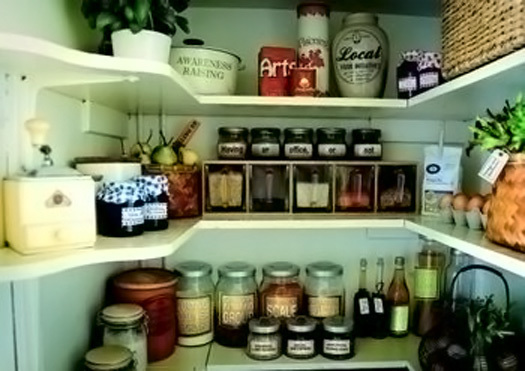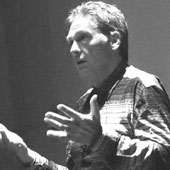
“If we wait for the governments, it'll be too little, too late. If we act as individuals, it'll be too little. But if we act as communities, it might just be enough, just in time.”
This month saw the launch of three new outputs from Transition Network. These are a new book, The Transition Companion, an online directory of Transition Ingredients and Tools and a set of Ingredients and Tools Cards.
As the Occupy movement, too, begins to explore the question, “How Do You Code A Movement?” this seemed like a good moment to catch up with Transition's web coordinator, Ed Mitchell, and ask him a question: How do you put all that experience into a website for others to share?
The short answer is: you don't.
In talking with Ed I learn to change my initial question. Contextual knowledge of the kind created by Transition groups exists among an ecology of actors and resources. It is lived, embodied, situated knowledge. Putting knowledge into an airless ‘bank’ is liable to kill it. I should better ask: what kind of web service, tools and approaches are needed to support the continuous flow of knowledge among communities when and where it is most needed?
The context is exciting, but challenging. Transition initiatives and groups have been multiplying at extraordinary speed. Among the 900 initiatives are officially designated Transition Towns (or cities, districts, villages — and even a forest) plus a larger number of communities that are ‘mulling it over’ as they consider the possibility of launching their own Transition Initiative formally.
To support this ecology of projects and groups, Transition Network has set up an international network of 95 Transition Trainers in 25 countries. They help provide training on a local basis. There are now also National Hub organizations in 12 countries that provide additional local support and networking.
Among the practical changes already achieved are Transition Lewes’s community-owned renewable solar energy company and Transition Brixton’s local currency that recently introduced pay by text transactions with the participation of local businesses.
Given this explosion of activity, Ed's starting point is that the Transition web project is not about the delivery of pre-packaged content. “Transition Network is a support organization, not a political party HQ,” he tells me. “Our approach is not to tell groups what to do, but to facilitate the effective sharing of ideas and resources between initiatives.”
Technically, this has involved the development of what Ed calls a “Product Sharing Engine” (below):

Ed's approach from the start has been that face-to-face is overwhelmingly the most important mode of communication for Transitioners. He is committed to cause Transitioners to “spend as little time in front of computer screens as possible.”
Ed is therefore much more than a web developer or platform builder. His work spans network, community and event design, and facilitation. “Sharing community-based knowledge depends multiple elements in different combinations at different times,” he explains; “there can be no one-size-fits-all solution.”
Transition's work is inspired by one of Buckminster Fuller's insights — the system-scale rule. This is the idea that large-scale problems do not require large scale solutions — they require small scale solutions within a large-scale framework.
Transition Network's tiny staff engages with a grassroots movement in which many thousands of people are developing models, tools and methodologies in a variety of contexts. In this spirit, Rob Hopkins' new book is filled with ingredients, not with rules.

These ingredients are laid out in stages relating to the Transition process — from deciding to give Transition a go (‘Starting out’), to making localisation a reality on the ground (‘Building’).
Back in 2009, Ed was given a budget of £36,000 ($57,000) to work with. He first asked for suggestions on which web tools and processes would be resilient enough to support the changing needs of transition groups around the world. The result was a huge list. He quickly decided that “this will kill me if I try to implement them all. From the start, I wanted to avoid the trap of trying to build a huge platform that would never be finished.”
Ed's approach is to augment the practical needs and requirements of Transitioners — not keep them stuck in front of screens all day. He admits to a “cordial hatred… of the way many social media managers talk casually about ‘driving people to the site’ or ‘keeping people online.’ The idea that living online and tweeting and blogging all day is nonsense.”
I ask Ed about the architecture of the Transition web service. “The Transition Network site is not in the middle” Ed explains; “there is no middle. Our idea is is to enable the widest distribution of project cases as possible, not to gather them all together in one place.”

I ask Ed how he measures progress and assures quality. “We did look at such functions as voting, and star-rating widgets” he tells me, but “in the event, the ratings tools never worked properly. Our preferred approach is to enable a kind of distributed guided search in which human beings advise each other on which, in their direct experience, is the best source of help to turn to.”
The Transition wiki states, “Here's how it all appears to be evolving...”. I ask Ed how on earth he keeps up when things are moving so fast. “We can't control the situation” Ed replies, cheerfully. “I suppose we could employ reseachers to record all our information on Excel spreadsheets. But, well, we just don't.” Ed does concede that Transition Network could probably use an historian, or a librarian.
Three years after Ed first inspired me with his non-techie vision of how the web could help Transition movement, a new Stories Project has just been launched. Twelve 'social reporters' around The United Kingdom will each produce one blog post every day on a subject set by a guest editor at the beginning of the week.
The aim, as Ed's colleague Charlotte du Cann explains it, is “to communicate the real-life issues and experiences of being in Transition…a new narrative for the ‘down curve’ of consumption and energy use. To show and record what is really happening in Transition towns across the country, in the neighbourhood, inside ourselves.”
“We're not trying to convert users into viral marketing evangelist” Ed explains. “We're exploring a channel through which people can tell their own stories of the ins and outs of their lives, and to help connect communities as they struggle through an unknown present and uncharted future.”
“We've built a website, but at every point we question the concept of centrally-controlled systems and authority” Ed concludes.

“The aim has always been to see the website as a star in a Transition Constellation rather than a ‘Hub’ with spokes.”
(Two previous articles on Transition by this writer are here and here.)


Comments [2]
11.26.11
02:20
12.04.11
03:26